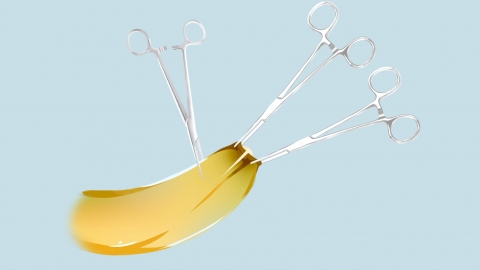What should be done about a child's phimosis?
Generally, phimosis in children may be caused by congenital preputial orifice stenosis, prepubertal physiological phimosis, balanoposthitis, paraphimosis, external urethral orifice stenosis, and other factors. It is recommended to seek timely medical attention, identify the underlying cause, and improve the condition under a doctor's guidance through general care, medication, or surgical treatment. Specific analyses are as follows:

1. Congenital preputial orifice stenosis: At birth, the foreskin may be naturally adhered to the glans, and the preputial orifice is inherently narrow, preventing the glans from being exposed normally. Under a doctor's guidance, parents can gently attempt to retract the foreskin daily for cleaning, avoiding forceful pulling that could cause injury. After cleaning, promptly return the foreskin to its original position to prevent paraphimosis.
2. Prepubertal physiological phimosis: Before puberty, the child's genital organs are not yet fully developed, and the foreskin naturally covers the glans, which is a normal physiological phenomenon. This typically improves gradually with age. In daily care, simply wash the external genitalia with warm water, keep the area dry and clean, avoid excessive intervention, and refrain from frequently retracting the foreskin.
3. Balanoposthitis: Long-term accumulation of smegma may lead to bacterial infection and inflammation. Inflammatory stimulation can worsen adhesion between the foreskin and glans, exacerbating the phimosis condition, often accompanied by local redness and itching. Follow medical advice to apply medications such as erythromycin ointment, mupirocin ointment, or fusidic acid cream to the affected area. Thoroughly clean the area with warm water before applying medication.
4. Paraphimosis: Failure to promptly return the retracted foreskin may cause the preputial orifice to become trapped around the glans, obstructing local blood circulation and resulting in swelling and pain, which constitutes a medical emergency. Initially, the doctor will attempt manual reduction. If unsuccessful, a dorsal slit procedure may be performed to rapidly relieve the constriction and prevent ischemic necrosis of the glans.
5. External urethral orifice stenosis: Long-standing phimosis can compress and inflame the external urethral orifice, causing it to narrow gradually. Symptoms may include a weak urinary stream and urine flow splitting. Mild cases may be treated with external urethral orifice dilation performed by a physician, while severe cases may require external urethral orifice plasty to restore normal urethral diameter and improve urination function.
In daily life, children should wear loose, breathable cotton underwear to avoid friction from tight clothing. Handle gently during cleaning and do not forcibly separate adhesions between the foreskin and glans.







